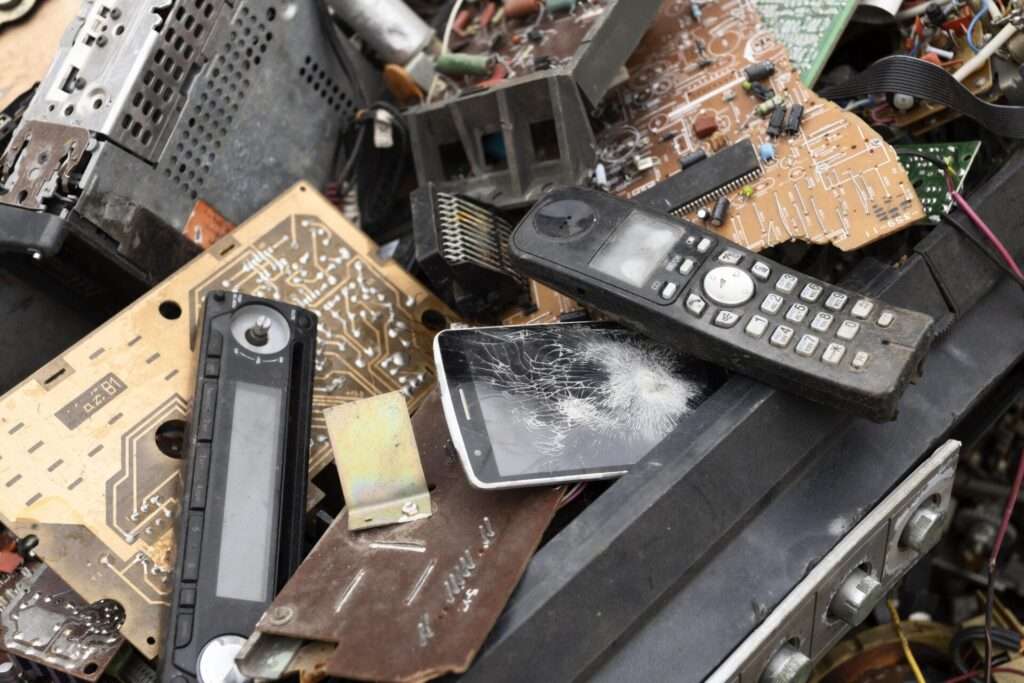Dispose & Recycle: Easy Guide to Safe E-Waste Solutions

Technology has grown so quickly in recent decades. Today, laboratories rely primarily on complex electronic instruments such as analytical equipment, computers, and specialist tools. However, this progress raises concerns, particularly about the disposal of obsolete, useless, or damaged equipment.
E-waste from laboratories can be harmful to the environment because many equipment include dangerous and non-biodegradable components. That is why it is critical to dispose of and recycle lab e-waste with extreme care—it cannot be discarded as regular waste.
Now, if not with household e-waste, how? This blog will offer a step-by-step approach to e-waste recycling for San Diego labs.
Step By Step Guide On E-Waste Disposal
Here are step-by-step measures for e-waste disposal in San Diego:
Step 1: Identify Your E-Waste
Electronic waste, often known as e-waste, comes from various sources in labs and workplaces, such as electronics, laboratory equipment, semiconductor equipment, biotechnology equipment, and research and development equipment. Hence, when cleaning, you have to identify e-waste extracted in the overall cleaning.
Valuable materials are found in large appliances like research and development equipment. E-waste also includes smaller goods like speakers and audio equipment. Because of its delicate parts, medical equipment, such as incubators and X-ray machines, must be handled carefully.
You need to separate these items from the other waste, as you cannot dump it with the other items. It would be great if you are more careful with e-waste.
Step 2: Prepare E-Waste for Disposal
E-waste containing metals, ceramics, and circuit boards must be handled with care due to dangerous components such as batteries and coolant.
To guarantee safe and sustainable disposal, categorize e-waste into big equipment and smaller goods like chargers and speakers. Before disposing of detachable parts, carefully delete any personal data.
Hazardous materials, such as medical equipment, lighting, and batteries, should be stored in separate bags or containers to prevent contamination or leaking. Non-flammable containers are appropriate for broken batteries that represent a fire threat.
Once you complete proper e-waste preparation, you can move forward to a safe and efficient recycling procedure.
Step 3: Find Disposal and Recycling Options
Partnering with licensed e-waste recyclers is crucial for successful recycling as they adhere to strict environmental and safety guidelines.
These recyclers provide:
- E-waste disposal services.
- Safe treatment of hazardous materials.
- Recovery of valuable components.
They also help organizations avoid legal liability and promote global efforts to reduce e-waste’s environmental impact.
To select a reputable recycler, inquire about their recycling process and certifications. Their policies should be transparent from collection to disposal and align with your company’s environmental and social responsibility objectives. Look for recyclers with certificates like R2 or e-Stewards, guaranteeing high ecological standards and data security measures.
When recycling e-waste, look for facilities using ethical techniques and ensure they use responsible waste management.
Step 4: Recycling Process
E-waste recycling comprises numerous processes, including collection, storage, manual sorting, mechanical separation, and recovery.
The first step is to collect electronic products using recycling containers, sites, take-back programs, or on-demand collection services. Many components from laboratory equipment contain hazardous materials like lead, requiring expert handling.
The second stage entails manual sorting, disassembling, and shredding, with components such as batteries and lights removed for processing.
The final stage includes mechanical separation. Magnetic separation separates ferrous metals such as iron and steel, whereas water separates plastics and glass.
The materials are ready for reuse and sale now that they have been separated. In the case of steel or plastic, it entails joining another recycling stream. Others might be processed on-site and sold next to early-stage isolated usable components.
Step 5: Sustainable Practices
Sustainability should start curing the procurement itself. Examine the equipment’s after-effects on the environment and hunt for certifications such as Energy Star or EPI badges.
Using devices sparingly can also help cut down on waste. Reduce the number of gadgets you own and teach kids how to recycle e-waste. Used biotechnology equipment should be disposed of properly because incorrect disposal can harm the environment and human health.
Keep security in mind when recycling gadgets and wipe personal information before delivering it to recycling organizations. Cleaning and avoiding overcharging batteries regularly can prolong the life of electronics and help manage e-waste more securely and sustainably.
Conclusion
If you are reading this blog till here, you are a responsible citizen and care about the environment. Now you have all the important information about e-waste recycling in San Diego, and by following these steps, you can deal with the e-waste found while cleaning.
This blog has covered everything for you and will be a one-stop solution for all e-waste disposal needs.